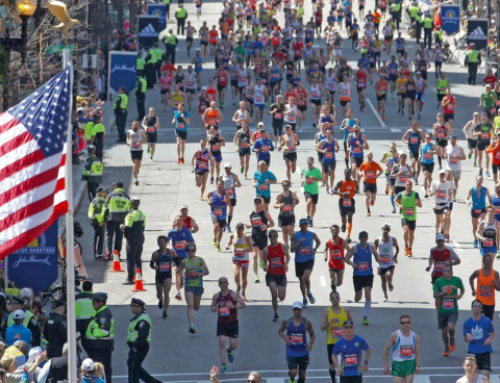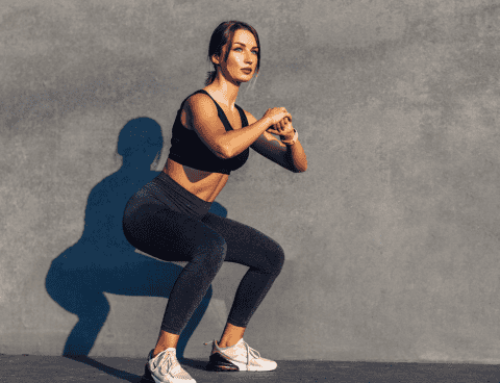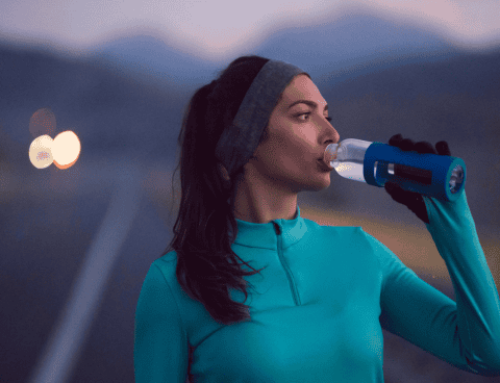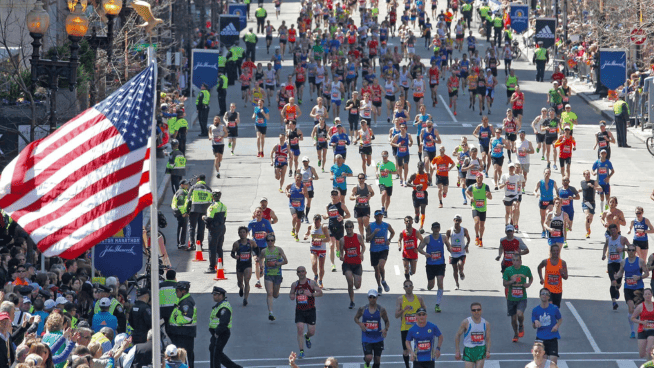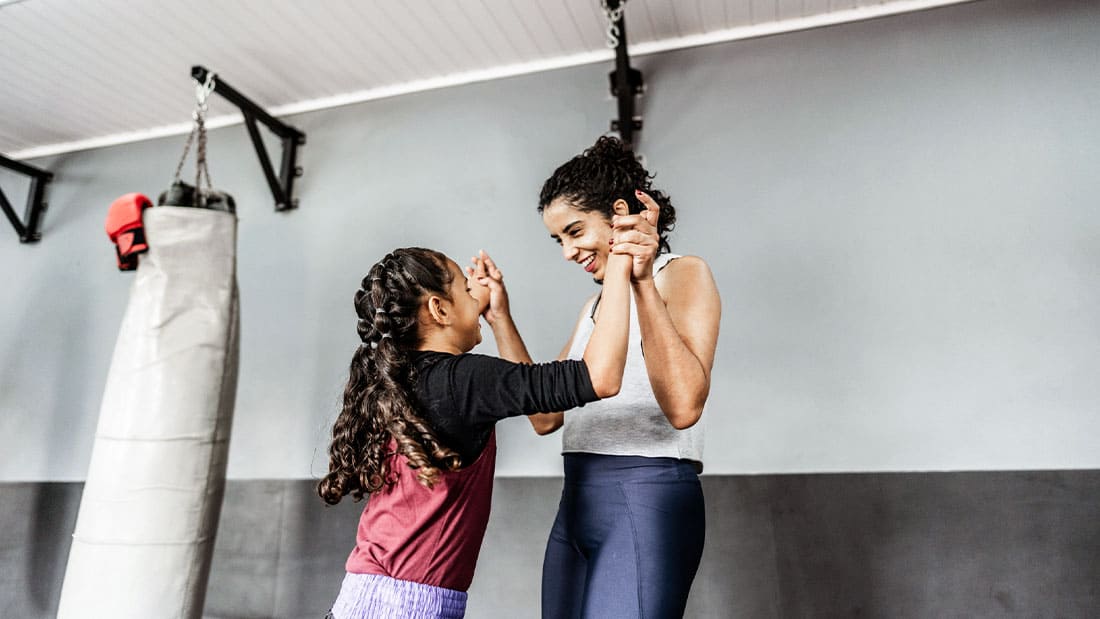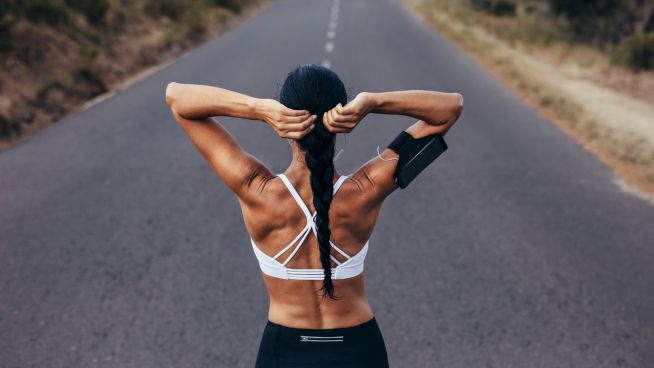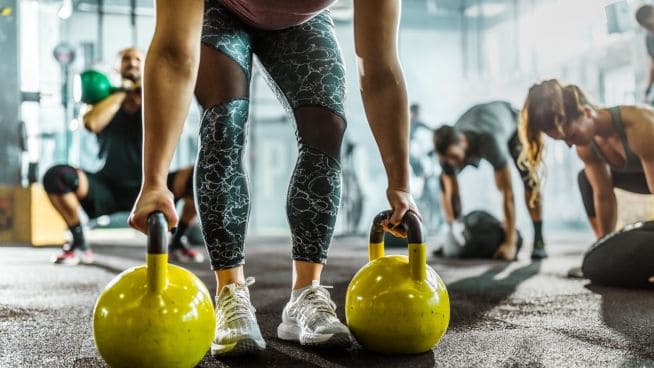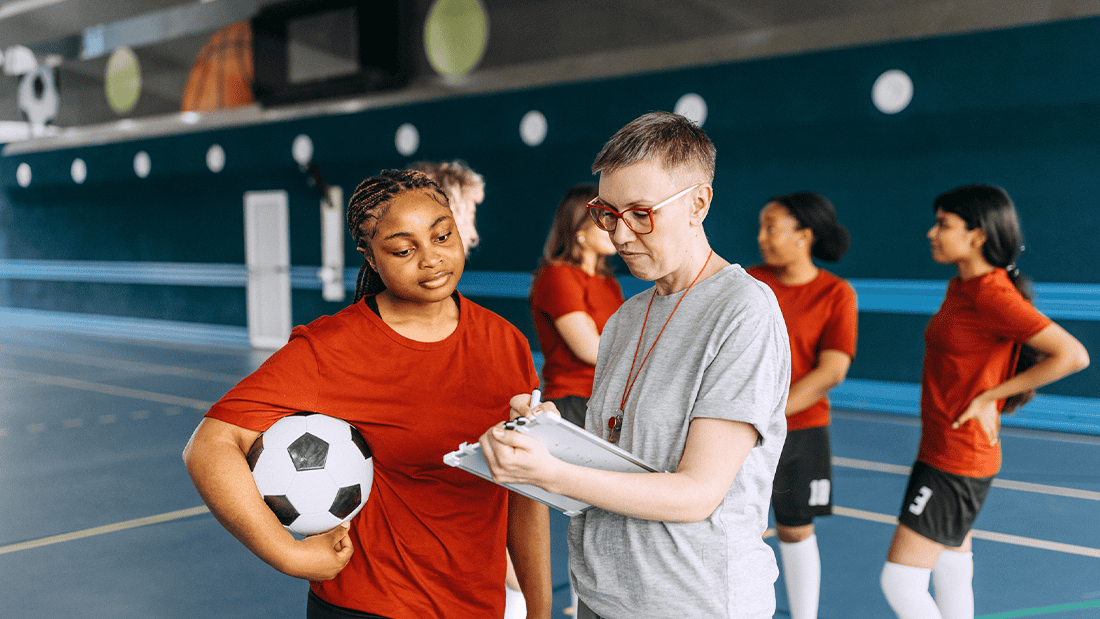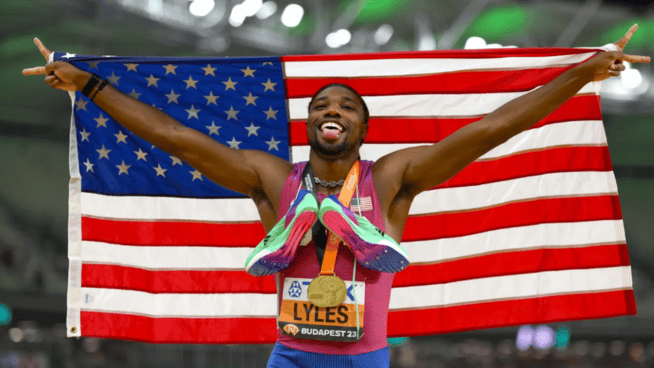The Secret Training Behind Dirk Nowitzki’s Ridiculous Longevity

After nearly two decades in the NBA, Dirk Nowitzki is still draining shots and creating match-up nightmares.
The 37-year old from Würzburg, Germany, now in his 18th season with the Dallas Mavericks, has logged over 1,440 career games. Despite the fact he’s currently the ninth-oldest active player in the league, Nowitzki is not slowing down. He’s averaging 17.3 points, 6.6 rebounds and 2.0 assists per game and helping a Dallas team that doesn’t look stupendous on paper stay in the thick of the Western Conference playoff race.
Nowitzki’s game is atypical for a 7-footer. Traditionally, towering players clog the paint, score on post-ups, rebound and protect the rim. Nowitzki, in contrast, has one of the silkiest jump shots around, and he’s currently shooting 38 percent from beyond the arc. He’s one of those rare big men who relies on mid-range and 3-point accuracy. In fact, he only averages 1.1 points per game in the paint.
How does a 37-year-old 7-footer consistently shoot the lights out?
Balance and coordination are key. Nowitzki’s balance is second to none, and his signature fadeaway jumper—a move where he hops away from the defender and launches up (usually off one leg) to release his shot—is virtually unguardable. But balance is no different from other athletic attributes. Like strength and speed, it usually declines with age.
Nowitzki also seems immune to the injuries that often plague older players. He played in 77 games last season and 80 the year before that. This season, he’s averaging 30.5 minutes per game and is on track to appear in over 75 games.
How does Nowitzki continue to perform at an elite level while staying remarkably healthy at his advanced age? The answer may be found in something called the Delos Postural Proprioceptive System.
A Secret Overseas
Casey Smith, the Mavericks’ head athletic trainer for the past 11 seasons, was introduced to the Delos three years ago at a game in Utah. There he met Tony Giovacchini, a former Stanford basketball player who had spent over a decade playing pro ball in Italy. While overseas, Giovacchini suffered a foot injury that was believed to be career-ending. Fortunately for him, his team had access to a Delos system for rehabilitation use. That’s because the team doctor, Dr. Dario Riva, invented the system. Giovacchini used the Delos extensively and was able to get back on the court surprisingly fast. He was so impressed with it that he was convinced it could be a big hit in the NBA.
RELATED: Dirk Uses Stim and Massages to Keep His Body Strong in his 18th NBA Season
Once his playing career ended, Giovacchini joined Delos as an employee, and he used his Stanford contacts to begin pitching the product to NBA teams. He first explained the Delos to Smith, who was immediately intrigued. The Mavericks purchased a unit shortly after their initial conversation, and Smith witnessed the Delos help Devin Harris successfully recover from a tricky foot injury. He was sold and began implementing it as a regular part of every player’s routine.
Smith says, “The impetus to purchase the Delos was initially Devin’s foot injury. Then it just fit real well with the way we shifted to address foot and ankle things. We’ve taken a much more proactive approach to things based on some stuff we’ve seen over the years and the research we’ve read.”
What Is the Delos?
So what exactly is the Delos? Basically, it’s a proprioceptive training device. Proprioception is defined as “the ability to sense stimuli arising within the body regarding position, motion and equilibrium”—meaning balance, stability and body awareness in space. The system includes a wireless balance board, a display screen, a stand and multiple sensors. It looks like this:

Courtesy of Delos International
Here’s how it works: During his first session, a player is subjected to a baseline stability test. He’s placed in a variety of static positions and must do his best to hold them solidly. The Delos uses sensors to measure how well the player balances and how he actually controls his balance.
“The screening method is a very specific method of assessing not just your balance, but how you’re controlling your balance. Are you controlling it with your eyes, trunk or feet and ankle? Ideally, we would like to reduce dependence on your eyes and trunk and increase the neuromuscular efficiency of your foot and ankle,” Smith says.
What makes the Delos more valuable than other proprioception exercise programs is that it instantly assesses a player’s deficiencies and asymmetries and measures whether he is improving over time.
Strong From The Ground Up
After the test, the player is assigned a baseline grade between 0 and 100. His grade and the data behind it help Smith and his team build a program specific to the player’s needs. Some players rely too much on their trunk for stability. Others lack range of motion. Others are weaker on one side of the body than the other. Whatever the issue is, the program is designed to address it.
“The board itself rotates so we can work in the frontal plane. In the transverse plane, you can rotate it at 45 degrees. It’s primarily single-leg stuff, but we do double too,” Smith says. When a player is working through a training session on the Delos, his eyes are locked on the display screen as two colored lines track his ability. The blue line traces the position of his trunk and the yellow line traces the position of his foot. “Ideally,” says Smith, “you want your chest and foot to be in a fine line. You can imagine if someone’s upper body is swaying, that blue line will be all over the place. It’s going to look like a two-year old scribbling. What you want is a very small, fine line as the person gets more motor control. You’re retraining the neural system.”
RELATED: 2 Exercises to Improve Balance and Stability
The Mavericks currently own three Delos systems, and they take two with them on road trips. Players perform a 15- to 25-minute session on the Delos three to five times a week. Since the training doesn’t cause significant fatigue, it can be used at any time. Players work to constantly improve their scores, which translates to both reduced risk of injury and improvement in on-court performance. Here’s where it circles back to Nowitzki.
A Living Outlier
When Nowitzki first stepped on the Delos three years ago, his baseline score was ridiculous. The exact number is privileged medical information, but it proved that he was unlike other aging 7-footers. As he has continued to train on the Delos over the last few seasons, his proprioception has gone from great to flat-out amazing.
A few other NBA teams use the Delos, but Smith says he’s never heard of anyone scoring higher than Nowitzki, who now routinely scores in the 90s.
“That score translates to a very good preventive indicator that he is at a decreased risk for a non-contact injury. That doesn’t mean he can’t get undercut or someone won’t fall on his leg, but for us, it indicates the non-contact muscle strains, the ligament damage, he’s at a reduced risk for that,” Smith says.
RELATED: 10 Balance Exercises That Will Make Every Athlete Better
Nowitzki’s absurd balance and stability also help him perform at a high level on the court—especially with his game, which is characterized by fadeaway jumpers and awkward-angle shots. “At the end of the day, shooting is a fine motor skill. And the less entropy, the less chaos there is within the body, the more efficient and the more accurate a player’s going to be. There’s no doubt increased proprioception is performance-enhancing,” says Smith.
Although his own teammates and several other teams use the Delos, it’s hard to believe that anyone benefits from it more than Nowitzki. His advanced age puts him at greater risk of injury, and arguably his game relies on proprioception more than anyone else’s. The fact that the Delos has not merely helped him maintain his proprioception over the years but has actually increased it could keep the big German playing at high level into his 40s.
RECOMMENDED FOR YOU
MOST POPULAR
The Secret Training Behind Dirk Nowitzki’s Ridiculous Longevity

After nearly two decades in the NBA, Dirk Nowitzki is still draining shots and creating match-up nightmares.
The 37-year old from Würzburg, Germany, now in his 18th season with the Dallas Mavericks, has logged over 1,440 career games. Despite the fact he’s currently the ninth-oldest active player in the league, Nowitzki is not slowing down. He’s averaging 17.3 points, 6.6 rebounds and 2.0 assists per game and helping a Dallas team that doesn’t look stupendous on paper stay in the thick of the Western Conference playoff race.
Nowitzki’s game is atypical for a 7-footer. Traditionally, towering players clog the paint, score on post-ups, rebound and protect the rim. Nowitzki, in contrast, has one of the silkiest jump shots around, and he’s currently shooting 38 percent from beyond the arc. He’s one of those rare big men who relies on mid-range and 3-point accuracy. In fact, he only averages 1.1 points per game in the paint.
How does a 37-year-old 7-footer consistently shoot the lights out?
Balance and coordination are key. Nowitzki’s balance is second to none, and his signature fadeaway jumper—a move where he hops away from the defender and launches up (usually off one leg) to release his shot—is virtually unguardable. But balance is no different from other athletic attributes. Like strength and speed, it usually declines with age.
Nowitzki also seems immune to the injuries that often plague older players. He played in 77 games last season and 80 the year before that. This season, he’s averaging 30.5 minutes per game and is on track to appear in over 75 games.
How does Nowitzki continue to perform at an elite level while staying remarkably healthy at his advanced age? The answer may be found in something called the Delos Postural Proprioceptive System.
A Secret Overseas
Casey Smith, the Mavericks’ head athletic trainer for the past 11 seasons, was introduced to the Delos three years ago at a game in Utah. There he met Tony Giovacchini, a former Stanford basketball player who had spent over a decade playing pro ball in Italy. While overseas, Giovacchini suffered a foot injury that was believed to be career-ending. Fortunately for him, his team had access to a Delos system for rehabilitation use. That’s because the team doctor, Dr. Dario Riva, invented the system. Giovacchini used the Delos extensively and was able to get back on the court surprisingly fast. He was so impressed with it that he was convinced it could be a big hit in the NBA.
RELATED: Dirk Uses Stim and Massages to Keep His Body Strong in his 18th NBA Season
Once his playing career ended, Giovacchini joined Delos as an employee, and he used his Stanford contacts to begin pitching the product to NBA teams. He first explained the Delos to Smith, who was immediately intrigued. The Mavericks purchased a unit shortly after their initial conversation, and Smith witnessed the Delos help Devin Harris successfully recover from a tricky foot injury. He was sold and began implementing it as a regular part of every player’s routine.
Smith says, “The impetus to purchase the Delos was initially Devin’s foot injury. Then it just fit real well with the way we shifted to address foot and ankle things. We’ve taken a much more proactive approach to things based on some stuff we’ve seen over the years and the research we’ve read.”
What Is the Delos?
So what exactly is the Delos? Basically, it’s a proprioceptive training device. Proprioception is defined as “the ability to sense stimuli arising within the body regarding position, motion and equilibrium”—meaning balance, stability and body awareness in space. The system includes a wireless balance board, a display screen, a stand and multiple sensors. It looks like this:

Courtesy of Delos International
Here’s how it works: During his first session, a player is subjected to a baseline stability test. He’s placed in a variety of static positions and must do his best to hold them solidly. The Delos uses sensors to measure how well the player balances and how he actually controls his balance.
“The screening method is a very specific method of assessing not just your balance, but how you’re controlling your balance. Are you controlling it with your eyes, trunk or feet and ankle? Ideally, we would like to reduce dependence on your eyes and trunk and increase the neuromuscular efficiency of your foot and ankle,” Smith says.
What makes the Delos more valuable than other proprioception exercise programs is that it instantly assesses a player’s deficiencies and asymmetries and measures whether he is improving over time.
Strong From The Ground Up
After the test, the player is assigned a baseline grade between 0 and 100. His grade and the data behind it help Smith and his team build a program specific to the player’s needs. Some players rely too much on their trunk for stability. Others lack range of motion. Others are weaker on one side of the body than the other. Whatever the issue is, the program is designed to address it.
“The board itself rotates so we can work in the frontal plane. In the transverse plane, you can rotate it at 45 degrees. It’s primarily single-leg stuff, but we do double too,” Smith says. When a player is working through a training session on the Delos, his eyes are locked on the display screen as two colored lines track his ability. The blue line traces the position of his trunk and the yellow line traces the position of his foot. “Ideally,” says Smith, “you want your chest and foot to be in a fine line. You can imagine if someone’s upper body is swaying, that blue line will be all over the place. It’s going to look like a two-year old scribbling. What you want is a very small, fine line as the person gets more motor control. You’re retraining the neural system.”
RELATED: 2 Exercises to Improve Balance and Stability
The Mavericks currently own three Delos systems, and they take two with them on road trips. Players perform a 15- to 25-minute session on the Delos three to five times a week. Since the training doesn’t cause significant fatigue, it can be used at any time. Players work to constantly improve their scores, which translates to both reduced risk of injury and improvement in on-court performance. Here’s where it circles back to Nowitzki.
A Living Outlier
When Nowitzki first stepped on the Delos three years ago, his baseline score was ridiculous. The exact number is privileged medical information, but it proved that he was unlike other aging 7-footers. As he has continued to train on the Delos over the last few seasons, his proprioception has gone from great to flat-out amazing.
A few other NBA teams use the Delos, but Smith says he’s never heard of anyone scoring higher than Nowitzki, who now routinely scores in the 90s.
“That score translates to a very good preventive indicator that he is at a decreased risk for a non-contact injury. That doesn’t mean he can’t get undercut or someone won’t fall on his leg, but for us, it indicates the non-contact muscle strains, the ligament damage, he’s at a reduced risk for that,” Smith says.
RELATED: 10 Balance Exercises That Will Make Every Athlete Better
Nowitzki’s absurd balance and stability also help him perform at a high level on the court—especially with his game, which is characterized by fadeaway jumpers and awkward-angle shots. “At the end of the day, shooting is a fine motor skill. And the less entropy, the less chaos there is within the body, the more efficient and the more accurate a player’s going to be. There’s no doubt increased proprioception is performance-enhancing,” says Smith.
Although his own teammates and several other teams use the Delos, it’s hard to believe that anyone benefits from it more than Nowitzki. His advanced age puts him at greater risk of injury, and arguably his game relies on proprioception more than anyone else’s. The fact that the Delos has not merely helped him maintain his proprioception over the years but has actually increased it could keep the big German playing at high level into his 40s.

